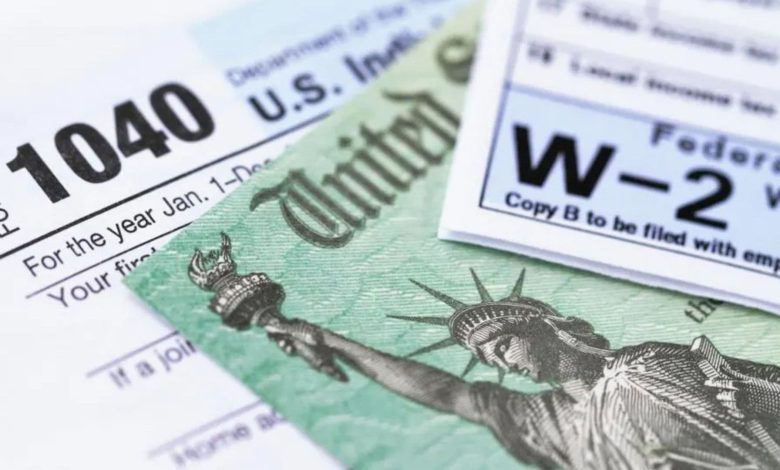
The way federal taxes impact different income levels in the United States is a multifaceted and often debated topic. How federal taxes affect the poor and the rich involves a complex interplay of tax brackets, deductions, credits, and various tax policies that ultimately shape the financial landscape for all Americans. While the federal tax system is designed with a progressive structure, meaning those with higher incomes should pay a larger percentage of their income in taxes, the reality is often more intricate due to the availability of deductions, capital gains benefits, and strategic loopholes that tend to favor high-income earners. Conversely, low-income individuals often face a significant burden from payroll taxes and regressive taxes, despite potentially falling into lower income tax brackets. This article will delve into the ways federal taxes influence both the poor and the rich, exploring the nuances of the tax system and the ongoing discussions surrounding tax fairness and reform, drawing on insights from organizations like Oxfam, the Tax Policy Center, and the Institute on Taxation and Economic Policy (ITEP) to provide a comprehensive understanding of this critical aspect of the U.S. economy.
The Progressive Tax System: Ideal vs. Reality
The United States employs a progressive tax system, where tax rates are intended to increase as income rises, based on the principle that those who earn more should contribute a larger share to government revenue. Federal income tax brackets currently range from 10% to 37%. Taxpayers can reduce their taxable income through various deductions, such as mortgage interest, business expenses, and charitable donations. Additionally, tax credits can further lower tax liability.
However, the progressive nature of the system can be undermined by various factors. Loopholes and tax havens can allow high earners to significantly reduce their effective tax rate. For instance, income from investments, known as capital gains, is often taxed at lower rates than regular wages. Wealthy individuals may also utilize offshore accounts and complex legal structures to minimize their taxable income. Furthermore, structuring income as business earnings can unlock additional deductions for the wealthy.

How Federal Taxes Impact the Poor
Despite often falling into the lowest tax brackets, low-income earners face several tax-related challenges.
- Payroll Taxes: Taxes for Social Security and Medicare represent a significant portion of income for lower earners, as these are applied at a flat rate on earnings up to a certain limit. The Social Security tax, for example, applies at a flat rate on earnings up to $168,600.
- Limited Access to Tax Breaks: Many common deductions, such as the mortgage interest deduction, primarily benefit middle- and upper-income individuals.
- Regressive Taxes: Sales taxes and excise taxes on goods like cigarettes, alcohol, and gasoline tend to disproportionately affect lower-income individuals, as they spend a larger percentage of their income on essential goods subject to these taxes.
- Earned Income Tax Credit (EITC) and Child Tax Credit (CTC): These are crucial refundable tax credits that provide significant assistance to low- and moderate-income working families, potentially even resulting in a negative average income tax rate for the lowest income quintile. In 2023, households in the lowest income quintile had a negative average income tax rate due to these credits. The CTC provides a credit of up to $2,000 per child under age 17, with up to $1,400 being refundable.

How Federal Taxes Favor the Rich
Wealthier individuals often have access to various tax-saving strategies that can substantially reduce their tax liability.
- Lower Capital Gains Tax Rates: Investment income is taxed at lower rates compared to ordinary income from work.
- Tax Loopholes and Offshore Accounts: The wealthy can utilize tax havens, offshore accounts, and legal loopholes to minimize their taxable income. Oxfam notes that tax loopholes permit the rich to stash profits in tax havens. Corporations also shift nearly $1 trillion in global profits to tax havens, depriving countries of needed revenue.
- Business Deductions: Structuring income through businesses allows for various deductions, reducing overall tax obligations for high-income individuals.
- Estate Tax Exemptions: Strategies involving trusts and strategic gifting can minimize inheritance taxes on large estates. Less than 1 percent of Americans are wealthy enough for their estate to be affected by the federal estate tax.
- Unrealized Capital Gains: The increase in the value of assets that have not been sold (unrealized capital gains) is not subject to personal income tax. This type of income disproportionately benefits the wealthy. ProPublica’s investigation highlighted that the 25 richest Americans paid a “true” tax rate of just 3.4 percent when considering $401 billion of income, including unrealized gains.
Tax Reform and Its Implications
Changes in tax policies under different administrations can shift the distribution of tax burdens and benefits across income groups. Recent reforms have included increasing standard deductions, reducing certain itemized deductions, lowering corporate tax rates, and adjusting tax credits for working families. Oxfam advocates for higher tax rates for billionaires and equalizing taxes on capital gains and labor income. They also propose a wealth tax and closing tax loopholes. Calculations by Oxfam suggest that a progressive wealth tax could generate $664 billion annually to help reduce poverty.
Discussions about future tax reform often involve proposals such as raising taxes on the wealthy, expanding tax credits for low-income families, implementing a wealth tax, and adjusting corporate tax policies to prevent tax avoidance. The ITEP notes that the public generally supports higher taxes on the rich and corporations. President Biden has proposed reforms that would raise revenue from corporations and their shareholders.

Perspectives on Tax Fairness
Oxfam argues that when billionaires and corporations pay a smaller percentage of taxes than average Americans, they are not paying their fair share. They believe the tax system should reward work over wealth. The Tax Policy Center highlights that while federal taxes reduce income inequality because high-income households pay a larger share of their income in total federal taxes, these taxes have done little to offset the increasing income inequality over the past 40 years. ITEP’s analysis indicates that the U.S. tax system is only barely progressive and could be significantly more so. They also point out that including unrealized capital gains in income calculations would make the tax system appear even less progressive.
ITEP’s 2024 analysis shows that the richest 1 percent will pay 23.9 percent of all taxes (federal, state, and local), slightly more than their share of total income (20.1 percent). However, this progressivity is limited and doesn’t account for unrealized capital gains. The poorest fifth of Americans will pay 1.5 percent of their income in taxes, slightly less than their share of all income (2.6 percent). State and local taxes are often regressive, offsetting some of the progressivity of federal taxes.
FAQs
Do the rich pay more in taxes?
Yes, in absolute terms, but often a smaller percentage of their total income compared to other income groups due to various tax advantages.
Why do low-income individuals feel a heavier tax burden?
They pay a larger share of their income in payroll taxes and regressive sales and excise taxes.
What is the Earned Income Tax Credit (EITC)?
A refundable tax credit for low- to moderate-income working individuals and families.
Are federal taxes progressive?
Yes, overall, higher earners pay a larger share of their income in federal taxes.
What are capital gains taxes?
Taxes on profits from the sale of assets like stocks, often taxed at lower rates.
What are tax loopholes?
Legal strategies that allow individuals and corporations to reduce their tax liability.
What is a wealth tax?
A proposed tax on an individual’s total net worth, including assets.